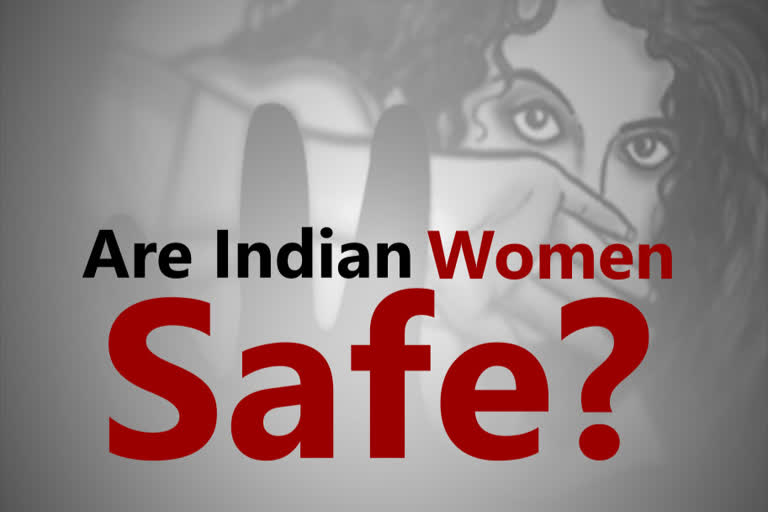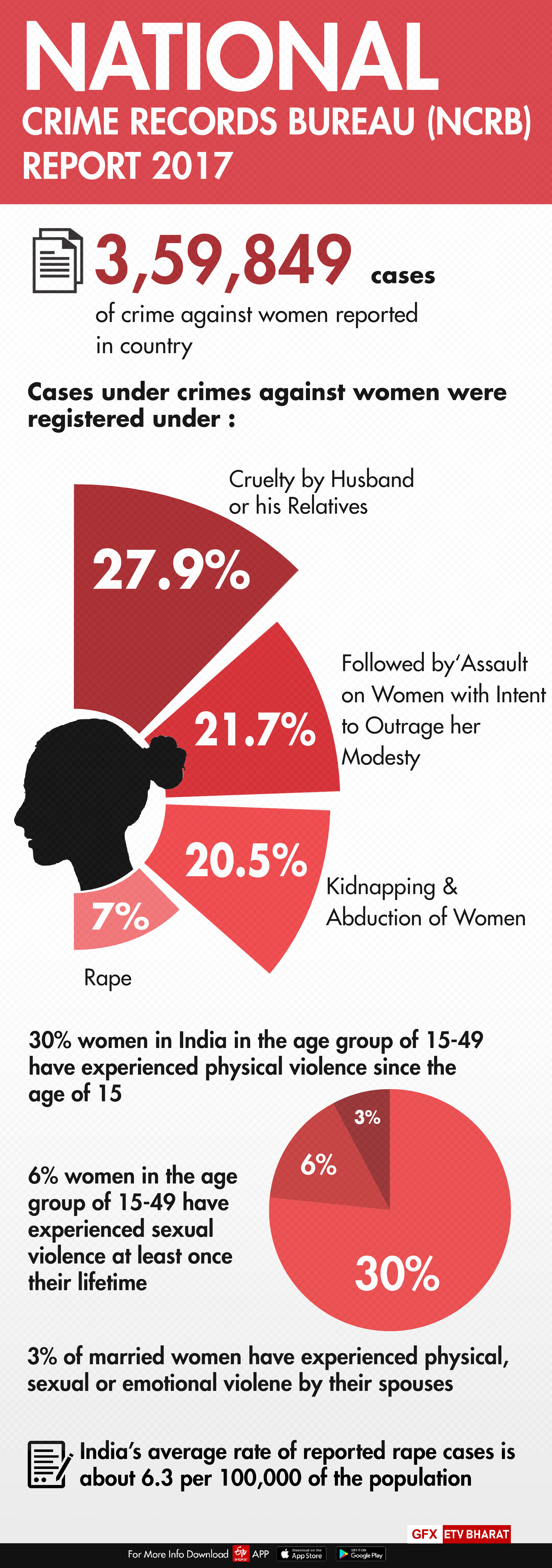Hyderabad: The gruesome gangrape and murder of a 27-year-old woman veterinarian in Hyderabad, has, once again, reignited the debate on 'safety and security of women' across the country.
The woman, whose two-wheeler broke down near Shamshabad toll plaza, was approached by four men, who sexually assaulted her and later killed her, burning the body at Outer Ring Road (ORR) underpass near Chatanpally village.
Police managed to nab four accused, based on the complaint by the family members and inspecting the CCTV footage in the area.
The audacity of the crime shook the country, with the people demanding stringent punishment for the accused. The police took this opportunity to urge the people to contact them in case of such issues and shared the contact details, including the 'SHE Teams'.
In this context, let us evaluate the report National Crime Records Bureau (NCRB) 2017, which reveals the gruesome reality of crime against women in our country.
According to the report, 3,59,849 cases of crime against women were reported in India.
The report clearly pointed out that majority of cases under crimes against women were registered under 'Cruelty by Husband or his Relatives' (27.9%) followed by ‘Assault on Women with Intent to Outrage her Modesty’ (21.7%), ‘Kidnapping & Abduction of Women’ (20.5%) and ‘Rape’ (7.0%).
Uttar Pradesh has topped the list with 56,011 cases of crime against women. It is followed by Maharashtra with 31,979 cases and West Bengal at 30,002.
National Family Health Survey (NHFS-4) states that 30% of women in India in the age group of 15-49 have experienced physical violence since the age of 15.
The report also reveals that 6% of women in the age group of 15-49 have experienced sexual violence at least once their lifetime.
About 3% of married women have experienced physical, sexual or emotional violence by their spouses.
India's average rate of reported rape cases is about 6.3 per 100,000 of the population. However, this differs in places like Sikkim and Delhi, which have rates of 30.3 and 22.5, respectively, while Tamil Nadu has a rate of less than one.




